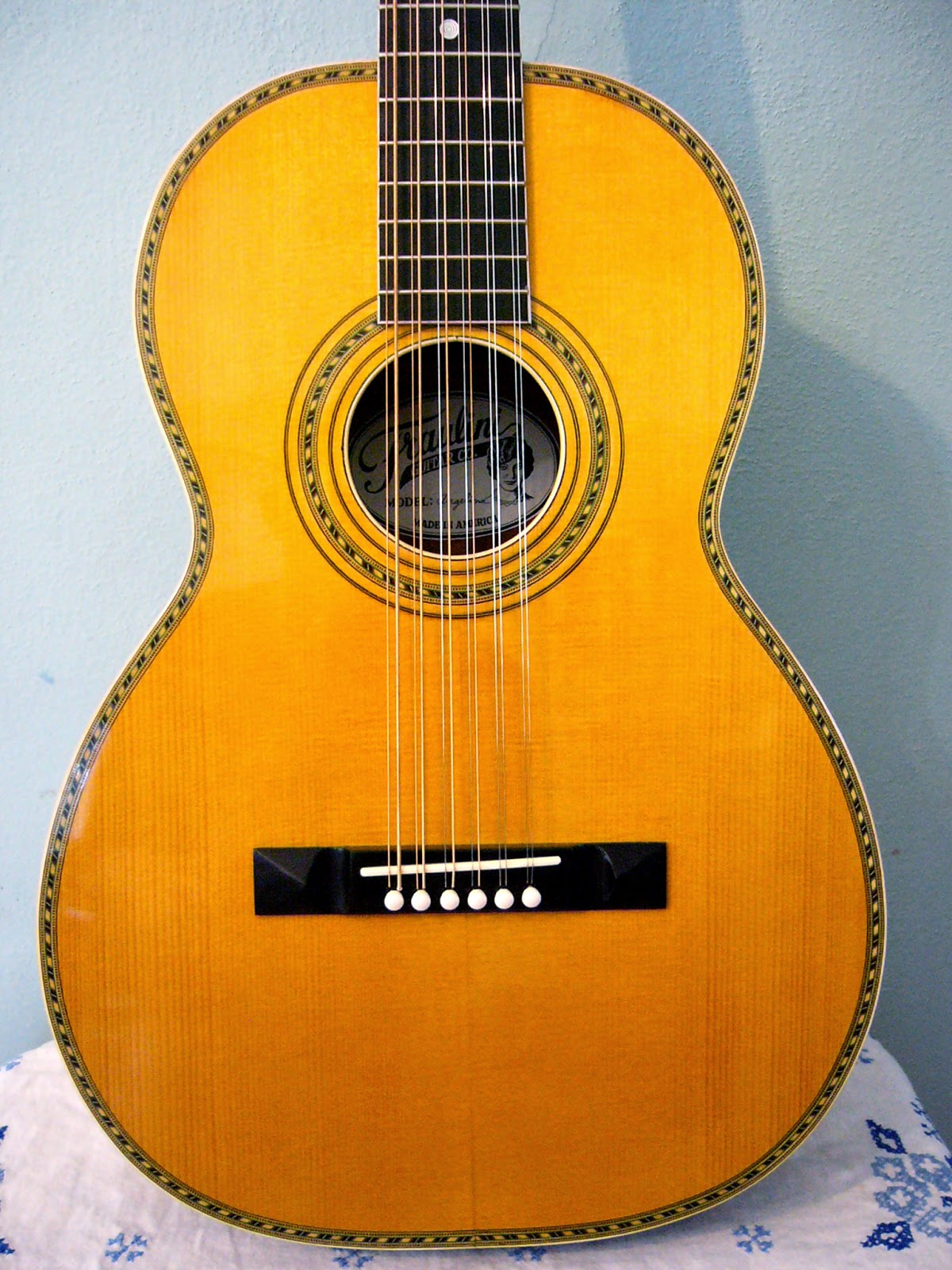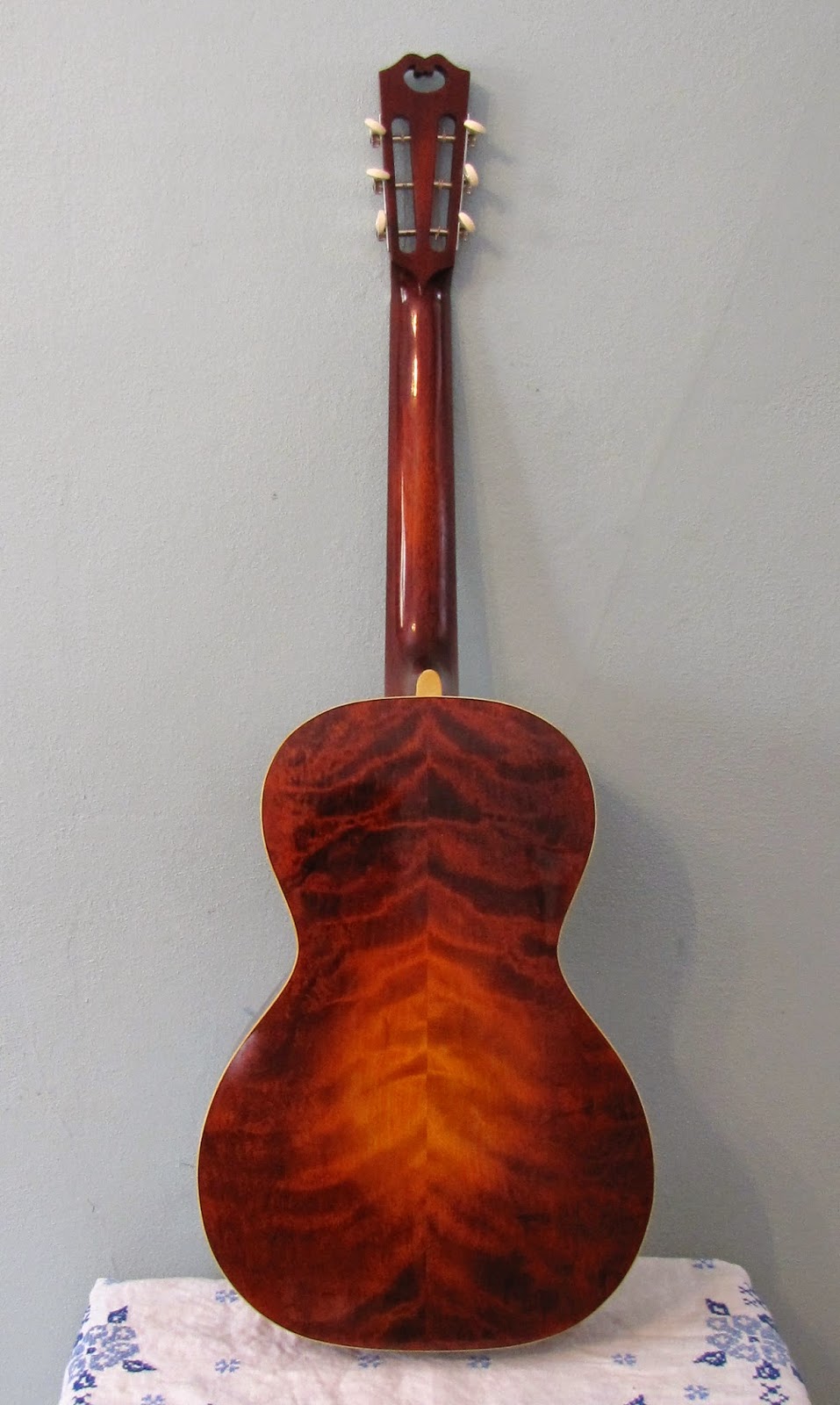Recently I had a conversation with a friend who is a Wisconsin farmer. He works his tail off from early Spring to late Fall, then spends his winters in Honduras. He has been working for several years on a project, planting trees, mainly mahogany, on mountainsides in order to restore forests which have been clear cut. Because the mountainsides are free of trees, erosion and mudslides have become big problems as there is no structure to hold the soil together during the rainy season. The clear cutting is largely the result of the demand for Honduran mahogany. The guitar industry uses lots of mahogany and the conversation has once again brought my mind around to thinking about domestic alternative tonewoods.
The first several guitars I built were made of all North American woods; White oak back and sides, maple necks, fingerboards and bridges. I wasn't approaching them with any kind of ecological consciousness, mainly I was just copying the old instruments I was collecting and repairing. At that time, I was making guitars for myself and for friends. As I began to make them for folks farther afield, I started using more exotic woods as that is what people seemed to want. Ten to fifteen years ago, the guitar world wasn't very receptive to the idea of using domestic woods, despite the fact that they were used extensively in the early 1900's, and played by many iconic musicians. It was quite difficult to market and sell instruments with woods like white oak or birch (not to mention poplar necks or stained maple fingerboards). I'm not sure if people have become more receptive to it, but over the years I've come to feel stronger about it, and I have greater urges to make domestic wood instruments that have the integrity of the old stuff, and are tastefully executed. I recently finished two guitars made completely from domestic woods which I've dubbed "The All Americans".
 The first is an Erma with a spruce top and white oak back and sides. The spruce came from the Northwestern US The white oak came from a Wisconsin tree that grew three miles from my house. The neck is made of poplar, which grows in abundance in the Northeastern US, big beautiful trees which yield a strong and stable wood. The fingerboard and bridge are maple from Wisconsin which I stained black. This combination of wood is in keeping with what Oscar Schmidt used on many of their Stellas. The guitar was patterned after an old Stella that I've played for the last 15 years. It was made in the 1920's and has a poplar neck, and an "ebonized" maple fingerboard and bridge. The neck could stand to be reset. but it has remained straight for 90 plus years. The fingerboard has also held up over time and is free of wear, despite the fact that the guitar has been played extensively and has had at least two fret jobs.
The first is an Erma with a spruce top and white oak back and sides. The spruce came from the Northwestern US The white oak came from a Wisconsin tree that grew three miles from my house. The neck is made of poplar, which grows in abundance in the Northeastern US, big beautiful trees which yield a strong and stable wood. The fingerboard and bridge are maple from Wisconsin which I stained black. This combination of wood is in keeping with what Oscar Schmidt used on many of their Stellas. The guitar was patterned after an old Stella that I've played for the last 15 years. It was made in the 1920's and has a poplar neck, and an "ebonized" maple fingerboard and bridge. The neck could stand to be reset. but it has remained straight for 90 plus years. The fingerboard has also held up over time and is free of wear, despite the fact that the guitar has been played extensively and has had at least two fret jobs.This guitar has a fairly reserved aesthetic. It looks like a plain old Stella, and sounds like one as well. I'm very happy with the way it turned out. I especially like the look of the flames on the back. A few coats of varnish really bring the white oak to life.
The second guitar is an Annunziata and was made in the spirit of the great Mexican American luthiers, Guadalupe Acosta and his sons Miguel, Luis and Jesus, and his apprentice Martin Macias. The Acosta's made guitars for luminaries like Lydia Mendoza and Lonnie Johnson. The bajo sextos of Martin Macias are highly prized, but he also made some great six string guitars. The back and sides, fingerboard and bridge are made from black walnut, which they all used extensively (Mike Acosta, the son of Miguel, told me that while they used mahogany on most of their instruments, they used walnut for all of the best ones). This particular wood came from a tree in a friends back yard. The top is spruce from the Northwest. The neck is poplar, which the Mexican American builders called "magnolia" as it comes from tulip poplar trees. The rope binding is made from Wisconsin walnut and maple. This is an exceptionally resonant guitar.
Both of these guitars are made like old instruments. I built them in the same manner that I build them for friends. I refer to this approach as "building it like an old guy", they are well made, but I didn't sweat the details. I left what I call "the mark of the hand", tool marks, steam marks from bending the sides (on the inside of the guitar), an exposed pore or two, things you see all the time on vintage instruments, but not in the modern world of perfect shiny instruments. The difference from these two and older instruments is that these have two way adjustable truss rods, compensated saddles, medium frets which are dressed and in their proper place. They sound every bit as good as an old instrument but are more playable. As always the guitars completely hand made, are assembled with hide glue, dovetail neck joints and varnish finishes. They both sound and play great and should be available shortly. Stay tuned.














































